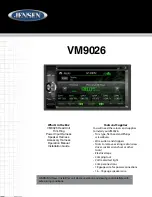
FLASHING IN UNDER SHINGLES
For Tile and other roofs, consult with the Factory.
For Composition and Cedar Shake Installation:
ACRSI supplies two special roof “Flashings” which
are used to make a waterproof seal for the solar
collector feed and return lines. These flashings easily
slip under a composition or shake shingle with
minimum cutting.
The tubing hole is large enough for the 1/2” od copper
pipe to easily slip through and the small space left can
be easily sealed with caulk and further covered with
insulation. The base of the flashing can flex and be
moved in different directions.
The 6” aluminum base is usually large enough to
make a watertight seal and can easily be flashed over
by a larger aluminum sheet when needed. It is
recommended that a 1 ½” hole be drilled for the
tubing hole.
“Roof Boot” Flashing and Waterproofing Details
The 2 aluminum flashings supplied with the system
are easily installed but require careful alignment to
assure a good fit. It is recommended that up to a 1½ “
hole be drilled to give “working room” when
installing the roof boot.
Spacers are included with
flush kits to make boot installation easier. Pre -fit
roof connections prior to drilling (see Section 8, top
and bottom connections).
NOTE: sound out your roof to be sure no rafters
are under where holes will need to be drilled!
Preposition the roof boot where it will go when the
pipes are connected to the compression 90 in its final
“out” position. Mark the center of the hole, remove
the fitting and place out of the way. Using a 1 ½”
hole saw or paddle bit, drill the hole. Carefully pry up
the shingle and slip the Roof Boot under the shingle
so water will freely flow over the roof boot.
If needed, add aluminum flashing to assure a
watertight installation (especially needed with Cedar
Shake). Caulk the sides as needed and it is good to
put two roofing nails in the bottom of the boot to
secure it AFTER the pipes are installed and fully
secured.
Roofing nails
(last)
Roof Boot Hole Cut in shingle Roof Boot Flashing under shingle
Note that Roof Boot is UNDER the shingles at the top and most of the sides so water flows over the top.
The shingle is cut down from where the hole is drilled.
Drill a 1 ½” hole 1 ½” in and centered
2” below the edge of the collector.
Slip flashing under shingles.
Use a “lifting Tool” with smooth edges to go
under and lift the shingle without cutting it.
Lift shingles before installing collectors.
Properly placed, the feed line is right
above the flashing tube hole.
The edge of the collector is 1 ½” above
the lower edge of the rails.
Summary of Contents for Fireball 20014
Page 2: ......













































